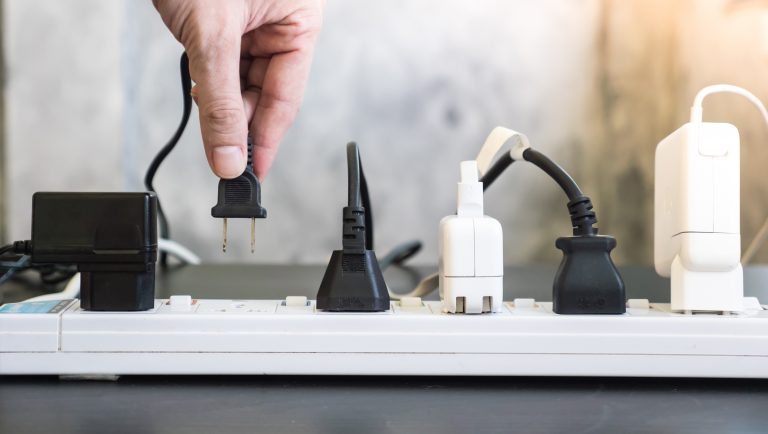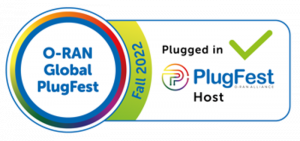Wireless
Accelerating Open RAN Innovation: The Industry Impact of O-RAN PlugFests

Key Points
- CableLabs’ involvement in advancing the Open RAN movement has included serving as host of 5G Challenge events and semiannual O-RAN Global PlugFests.
- Most recently, the PlugFest events involved testing interoperability, efficiency, performance and security of Open RAN components.
- This work is critical to enabling operators to build more cost-efficient, future-ready networks.
The Open RAN movement is gaining momentum, with increasing numbers of operators and vendors embracing the potential of open, interoperable radio access networks (RANs). At CableLabs, we’ve been at the forefront of this movement from the start, hosting NTIA-sponsored 5G Challenge events in our lab, as well as O-RAN Global PlugFests twice a year to bring together industry leaders and drive innovation.
Building on the success of our previous PlugFests, we’re committed to continuing this work, pushing the boundaries of what’s possible with Open RAN. In this blog post, we’ll take you through our latest efforts to test interoperability, efficiency, performance and security of Open RAN components.
Energy Savings Meet Uncompromised Performance
Together with Effnet, Red Hat and VIAVI, we tested ways to reduce energy consumption for cloud-hosted and resource-demanding telecom workloads by controlling the CPU power management feature. Doing so involved using the underlying cloud infrastructure to dynamically turn off unused CPU components and adjust CPU frequency in response to central unit (CU) traffic load conditions. This solution saved energy and reduced heat output while maintaining quality of service.
Furthermore, we looked at the impact that hardware accelerators like application-specific integrated circuits (ASICs), field-programmable gate arrays (FPGAs) and graphics processing units (GPUs) have in offloading the CPU. We performed these tests by processing large volumes of data in parallel to optimize specific tasks (e.g., 3GPP high physical layer, AI training). In a true multi-vendor Open RAN 5G gNB implementation, AMD, Effnet, Phluido, Red Hat and VIAVI demonstrated over-the-air peak throughput values close to the theoretical limits while maintaining high virtual RAN (vRAN) workload efficiency. Peak-load MAC stress tests demonstrated scalability gains with hardware acceleration (HWA) enabled.
Continuing our exploration of ways to harvest energy savings from every RAN component, we took a closer look at the Open RAN radio unit (O-RU) radio frequency (RF) front end. In collaboration with Eridan, Rohde & Schwarz and VIAVI, we observed stable RU energy consumption even when higher modulation orders are used, thanks to the linearity of the power amplifier.
Automated Security Assurance in Action
Telecom network evolution to modular, open architectures on cloud platforms poses security challenges due to increased software interdependencies and interface exposure. To mitigate these risks, periodic and automated security assurance testing is crucial as part of network operations.
Mavenir and VIAVI have successfully demonstrated this concept by automating the testing of 3GPP service-layer security implementation, validating secure interworking across RU, distributed unit (DU) and central unit components of a distributed 5G base station. All of this builds on momentum from the Spring 2024 PlugFest.
Open Fronthaul M-Plane Enables Multi-Vendor Operations
By providing a standardized interface for managing RUs from various vendors, the M-plane open fronthaul interface enables multi-vendor RU operations, eliminating the need to integrate and maintain multiple proprietary management interfaces. During the Fall 2024 PlugFest, we observed the Eridan RU M-Plane successfully integrated with the VIAVI DU emulator to demonstrate adherence to the Open RAN Working Group 4 (WG4) technical specifications. The results of this test offer a promising outlook for future collaborations, as the knowledge obtained will be instrumental in multi-vendor operations and open standard implementations.
Get Involved in Open RAN
Guided by the Technology Vision for the network of tomorrow, CableLabs committed to driving innovation in network infrastructure. In the future, we plan to further explore innovative Open RAN implementations that enable operators to share infrastructure, scale economically, reduce total cost of operation and ultimately migrate to AI-enabled networks.
We welcome CableLabs members, vendors and application developers to join us at these upcoming events.
Wireless
Bringing Open RAN Closer to Broader Adoption: Insights from the Spring ’23 O-RAN PlugFest at CableLabs

Open Radio Access Network (Open RAN) is one of the most talked-about mobile network technologies these days — and for good reason. There’s a need to reshape the mobile industry toward fully interoperable, secure, trustworthy and cost-effective networks.
Recognizing that need, governments are beginning to throw their support behind the technology. In May, leaders in the Quadrilateral Security Dialogue (commonly known as the Quad) announced cooperation with Palau to deploy Open RAN, the first deployment of its kind in the Pacific Islands. In June, the governments of the United States and India announced that they would partner on Open RAN field trials and rollouts, including scaled deployments.
But those interoperable network architectures aren’t built overnight. First, their technical specifications need to be agreed upon. Then, their implementation needs to be tested before the network architectures can become commercially available.
Spring 2023 O-RAN Global PlugFest
Twice a year, a worldwide community of vendors, operators, and research and academic institutions gathers to test their latest O-RAN implementation during O-RAN Global PlugFest events. CableLabs, which has been active in O-RAN Alliance work groups for some time, started hosting PlugFests in 2022, participating in the most recent event this past spring.
The Kyrio O-RAN Test and Integration Center (OTIC) at CableLabs was one of four North American host labs for the Spring 2023 PlugFest. The event brought innovation to the cost-efficient operation and management of Open RAN while also expanding the vendor ecosystem.
Tackling Challenges
Multi-Cloud Enabler
If a telecom operator needs to manage cloud workloads at various locations (i.e., edge, core) while maintaining the freedom to choose between cloud providers and vendors, a standardized, cost-effective approach is necessary. Open RAN addresses that need by specifying the O2 interface, which connects the service management and orchestration (SMO) platform to the Open RAN Cloud infrastructure (O-Cloud). More specifically, the management of the cloud infrastructure (i.e., compute, hardware accelerator, storage, gateway and site network fabric) is performed via the O2-infrastructure managed services (O2-IMS) interface.
In April, the Cloudification and Orchestration Work Group (WG6) drafted the first version of the O2-IMS Conformance test specification, aiming to ensure compatibility and interoperability among different implementations. At this PlugFest, O2-IMS Conformance testing on Red Hat OpenShift O-Cloud was demonstrated for the first time. Although the conformance of the O2-IMS implementation was successfully validated, the testing also revealed areas for improvement in the specification, which were fed back to the standards. In addition, to make O2-IMS conformance testing widely available, the RobotFramework test scripts developed by Red Hat will be submitted to the O-RAN Software Community Infrastructure (SC INF) open-source project.
Energy Savings Toward OpEx Reduction
GSMA, an industry organization representing the interests of mobile network operators worldwide, indicates that energy consumption typically accounts for 15 percent to 40 percent of operators' operating expenses (OpEx). This percentage is forecasted to increase in the coming years, following the mobile data traffic growth trajectory. That makes energy savings extremely important for operators. Some may turn off equipment during off-peak hours to conserve energy, but they must still maintain quality of service (QoS). Thanks to recent advancements in machine learning (ML) and Open RAN architecture implementation — for example, rApps running on Radio Interface Controller (RIC) — that job can become more efficient.
During the PlugFest, we observed the Capgemini AI/ML-powered energy savings (ES) rApp to ingest performance measurements and configuration management data generated by the VIAVI RIC Test/AI training module via the standard O1 and R1 interfaces. The data was used to train the rApp ML algorithm to predict the sector and cell load accurately. The ML prediction enabled the ES rApp to identify and timely schedule energy savings measures for the target cells while maintaining subscribers’ QoS.
Ecosystem Expansion
Despite the progress made toward improving the operational efficiency of Open RAN, a large and vibrant vendor ecosystem still remains a prerequisite for its broad adoption. Effnet, a new entrant to the ecosystem, brought its system combining Distributed Unit (DU), Central Unit (CU) and 5G Core Network (5GCN) entities for first-time integration and testing with VIAVI user equipment (UE) and radio unit (RU) emulators. These components formed an end-to-end system under evaluation. We observed the open fronthaul being successfully integrated using distributed network timing (LLS-C3) topology. In addition, cell broadcast was verified and 5G New Radio (NR) initial access was tested. This was one more testament that equipment from a new vendor, which interprets the open standards correctly, can interoperate via open interfaces. More importantly, the knowledge obtained will be applied at the next PlugFest in Fall 2023.
Read more about recent O-RAN Global PlugFest events, and look out for more information about the Spring 2023 event.
Other Important Open RAN Initiatives
Our involvement with O-RAN Global PlugFest events is just one way CableLabs and its subsidiary, Kyrio, partner with the industry in the development of interoperable and cost-efficient network technologies.
For a second consecutive year, CableLabs and Kyrio are hosting the 5G Challenge, which recognizes high-performing Open RAN solutions that demonstrate multi-vendor interoperability across radio, centralized and distributed units.
Also, for vendors seeking to certify their Open RAN equipment, Kyrio offers certification and badging testing services.
What’s Next for Open RAN?
The spring PlugFest event fostered innovation, identified areas for improvement and expanded the Open RAN ecosystem. But our work doesn’t end there. For Open RAN to become the radio access network architecture of choice, it must demonstrate efficiencies that surpass the monolithic RAN it aims to replace. Herein lies the challenge: How can an open and distributed network architecture, like Open RAN, generate cost savings that make its deployment worthy?
We’ll explore answers to that question and put them to the test in future O-RAN PlugFests at our Kyrio OTIC.
If you’re a CableLabs member, vendor or developer with a solution or an idea to reduce the cost of deploying and operating Open RAN, contact us using the button below.

Wireless
Charged Up and Gaining Ground: Global PlugFest Moves Open RAN Ecosystem Closer to Commercial Deployment

Service providers constantly reconsider their network architectures in search of economies of scale and new business model opportunities, keeping a close eye on open network architectures. Taking advantage of the continuous decoupling of hardware and software, the mobile industry has been working on a software-defined open radio access network (RAN) initiative called Open RAN.
What exactly is Open RAN? What does it mean for wireless network technologies? Finally, how is CableLabs actively involved in the initiative?
What Is Open RAN?
Open RAN is an open set of technical networking specifications realizing open interfaces and network programmability. The initiative enables mobile operators to deploy intelligence closer to where it's needed, whether at the antenna or at edge of a network, to improve operational efficiency and quickly adapt to new service models.
Open networking is also getting attention from governments. On Dec. 8, 2022, the governments of the United States, the United Kingdom, Australia and Canada announced in a joint statement the endorsement of these Open RAN principles:
- Open disaggregation
- Standards-based compliance
- Demonstrated interoperability
- Implementation neutrality
To demonstrate the principles in action, the O-RAN Alliance—a group of mobile operators, vendors, and research and academic institutions—has been holding bi-annual Global PlugFests.
O-RAN Global PlugFest
CableLabs was one of six hosts for the Fall 2022 O-RAN Global PlugFest. During the PlugFest, the Kyrio Open Test and Integration Lab—located at our main offices in Louisville, Colorado—made its state-of-the-art 5G facilities available to network and test equipment vendors. Overall, we observed that Open RAN equipment from various vendors can interpret the open standards correctly and interoperate successfully under load conditions, paving the path toward commercial deployments.
Seven participants—Calnex, Capgemini Engineering, Lumentum, Radisys, Sunwave, VIAVI and Xena Networks—collaborated, integrated and tested three scenarios to demonstrate interoperability based on open interfaces implementation. Specifically, the companies tested:
- Multi-vendor Open RAN system integration and end-to-end system performance using 5G user equipment (UE) and 5G Core network emulators. The Open RAN system consisted of Centralized Unit (CU), Distributed Unit (DU) and Radio Unit (RU) components interconnected via third-party small form-factor pluggable (SFP). Upon successful integration, the participants measured the fronthaul latency impact on peak user throughput and cell throughput under various signaling and user traffic load conditions.
- The interoperability of Open Midhaul (F1) and Xn interfaces for an Open Centralized Unit (O-CU) that adheres to the CU-DU Split gNB architecture defined in 3GPP. Both interface management and UE-context related procedures were verified.
- Near-Real-Time Radio Interface Controller (Near-RT RIC) integration and testing with RIC Tester. The Open RAN E2 interface procedures, used to enable near-real-time software applications for network automation (xApps), were verified against an emulated 5G RAN. In addition, a QoS xApp was successfully integrated.
For more information about the fall event, visit the O-RAN Global PlugFest web page.

Ongoing Interoperability Work
The Fall 2022 O-RAN Global PlugFest event was just another way CableLabs works with the industry and vendors to drive interoperable network technologies.
Also last year, CableLabs was recognized for its interoperability testing in mobile network technologies when it was named the host lab for the 5G Challenge’s Preliminary Event. The challenge was hosted by the National Telecommunications and Information Administration’s (NTIA’s) Institute for Telecommunication Sciences in collaboration with the U.S. Department of Defense.
In addition, Kyrio—a CableLabs subsidiary—provides Open RAN certification and badging testing services (conformance, interoperability, end-to-end) for those who want to certify their Open RAN component or system on their own time at their own pace. If you're interested in Kyrio’s testing services, learn more or contact the team.
What’s Next for Open RAN?
The fall PlugFest event allowed the industry to get the pulse of the Open RAN ecosystem. And our work continues.
CableLabs and Kyrio plan to continue hosting O-RAN PlugFest activities at our Kyrio OTIC lab. In the future, we'll be exploring innovative radio network implementations based on the Open RAN architecture. We welcome CableLabs members, vendors and application developers to join us at these upcoming events. To register your interest in participating, contact us using the button below.


